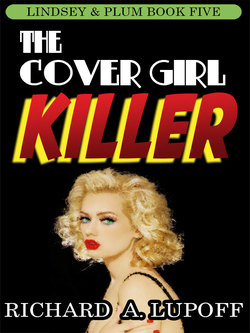Читать книгу The Cover Girl Killer - Richard A. Lupoff - Страница 5
На сайте Литреса книга снята с продажи.
ОглавлениеAUTHOR’S NOTE
Like all books in the Hobart Lindsey/Marvia Plum series, The Cover Girl Killer is a work of fiction and should not be mistaken for one of history of journalism. However, like the earlier volumes in this series, it is based on modern American history and mass culture, and I would like to point out just which elements in this book are real and which are not.
The Spanish Civil War of 1936-1939 was one of the great tragedies of the Twentieth Century. Like any war it caused immense suffering, vast devastation, and many thousands of deaths. The exact number will never be known. The casualties included not only the soldiers and civilian people of Spain, but tens of thousands of “volunteers,” most of them authentic, the rest forced, from nations throughout Europe, North America, and North Africa.
At the end of the war, Spain was left suffering under a military dictatorship that survived for nearly forty years. The dictator, Francisco Franco, outlived his mentors, Adolf Hitler and Benito Mussolini, as well as his bitter foe, Josef Stalin. Only with Franco’s death in 1975 did Spain become a constitutional monarchy whose people enjoy the benefits of free institutions and civil liberties.
It has been suggested that the outcome of the Spanish Civil War matters little, that the resulting regime would have been a brutal dictatorship in any case. Under a Fascist regime or Communist, the people suffer equally. Not everyone agrees with this analysis; certainly my fictitious veteran of the war, Benjamin Bruninski, does not.
The Abraham Lincoln Brigade was very real. My Cousin Aaron was a member, and died in Spain. I first heard of Aaron from my grandmother, and for half a century I searched for him, until Milton Wolff, the final commander of the Lincolns, told me of his friendship with Aaron. He told me stories of Aaron’s life and of his death, and I am eternally grateful to him.
Esther Miriam Silverstein Blanc was a nurse who served in Spain, and after returning to the United States, in World War II. Despite illness and infirmity, she told me the inspiring story of her wonderful life, and I am equally grateful to her.
Milton Wolff and Esther Blanc provided invaluable material which I used in the creation of Benjamin Bruninski and Esther Carcowitz, but my characters are nonetheless fictitious and should not be taken as literal representations of Milton Wolff or Esther Blanc.
Benjamin Bruninski’s statements about the House Committee on UnAmerican Activities, and about the phenomenon of McCarthyism, are of course the fictitious words of a fictitious character. They should not be mistaken for statements by the author. However, I would suggest that interested readers pursue the history of both HUAC and Senator Joseph R. McCarthy, and the youthful involvement of both Richard Nixon and Robert Kennedy with these early players in the drama of the Cold War. It was the now-forgotten Charles Dudley Warner who said, Politics make strange bedfellows, as long ago as 1870. He was a better prophet than he knew.
It was on February 20, 1950, that the self-styled Tailgunner Joe McCarthy made his most famous statement: “I have in my hand fifty-seven cases of individuals who would appear to be either card-carrying members or certainly loyal to the Communist Party, but who nevertheless are still helping to shape our foreign policy.…” The decent men and women whose careers, and in some cases whose very lives, were destroyed by HUAC and McCarthy, are a reproach to those who remember, and even more so to those who have forgotten.
The development of paperback publishing in the United States and other countries is a fascinating story all its own, and the collectors who track down forty- and fifty-year-old “sleaze digests” and “good girl art” are not only amusing themselves with an obscure and eccentric habit—they are helping to preserve a body of popular culture which might otherwise have been lost to history.
Paige Publications is regrettably a figment of my imagination, as are all of its staff, authors, editors, artists, and the eight (or nine) titles that Paige published in 1952 and ’53. With one exception, the excerpts that appear in The Cover Girl Killer are all that exist of those nine (or eight) books. The exception is Death in the Ditch, by Del Marston. By some miracle or manifestation of ectoplasmic materialization or automatic writing, that book has come into being. I have held a copy in my hands; the citations in The Cover Girl Killer do come from Marston’s hardboiled saga; and I commend any reader whose diligent efforts lead him or her to a copy of this little literary gem.
—Richard A. Lupoff
